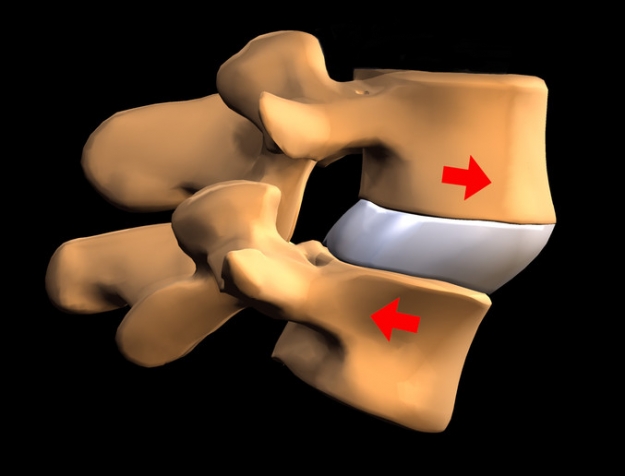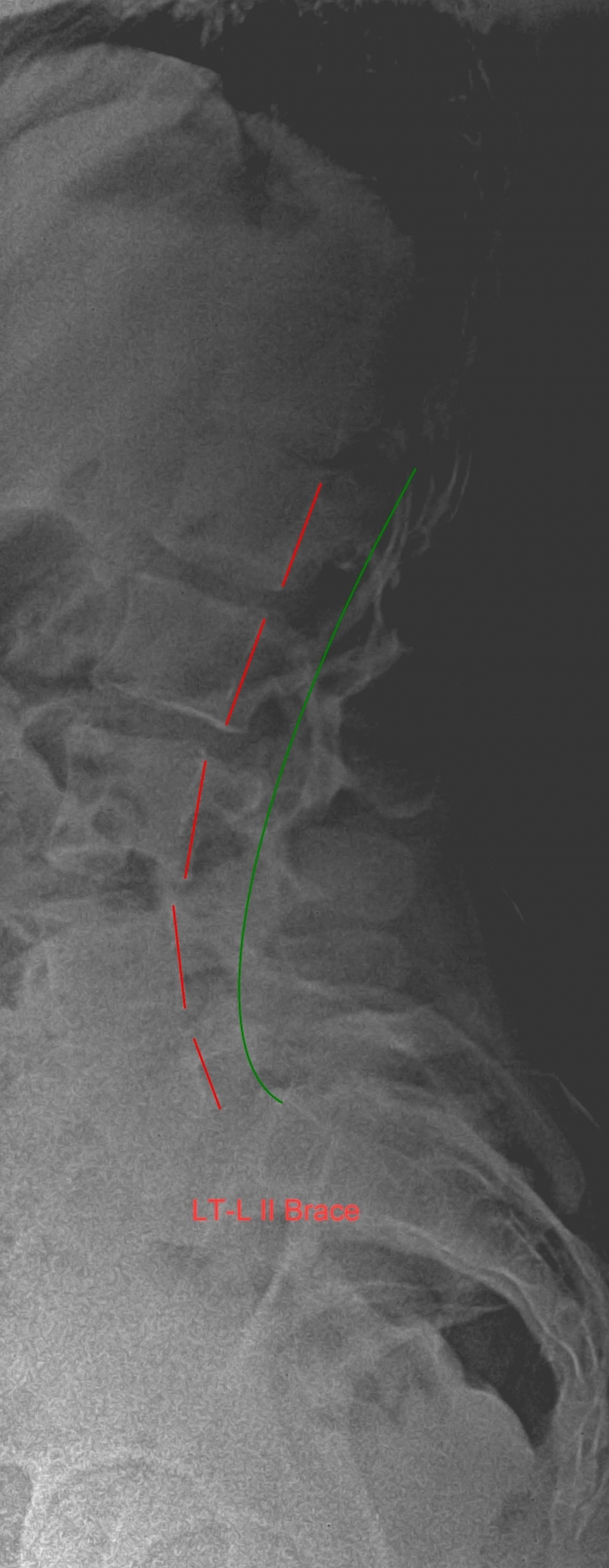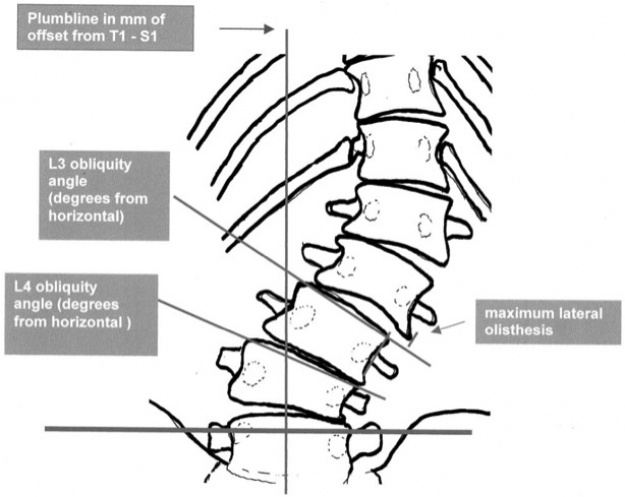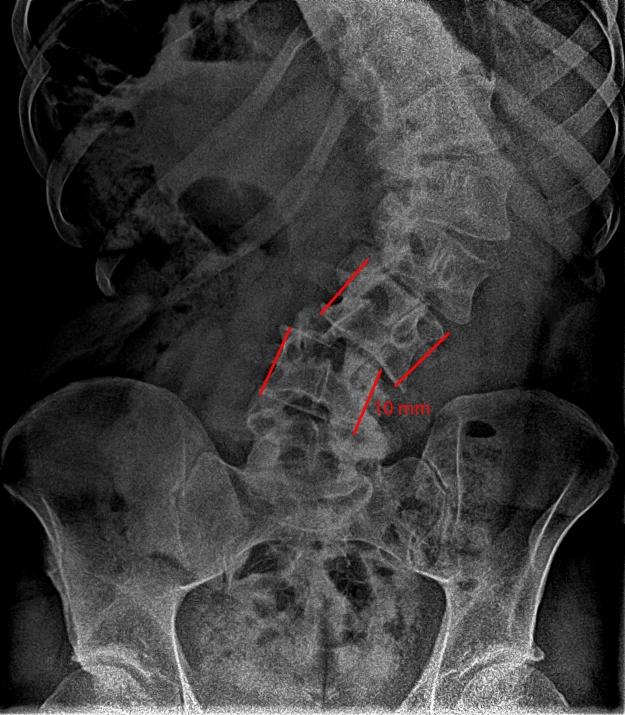Spinal Joint instability
Joint instability is defined as a loss of spinal tissue integrity in the muscles, tendons and especially ligaments. It can be referred to as spondylolisthesis (anterolisthesis), lateral listhesis (rotatory subluxation) or retrolisthesis, depending on which direction the vertebra slips. We will here examine the first two forms:
Spondylolisthesis
 Spondylolisthesis results from the anterior vertebral slip of lumbar and ocasionally cervical vertebrae. This condition appears when the spine's structural integrity is compromised by dysfunctional spinal joints, especially the ligaments, tendons and muscles and sometimes part of the vertebral bone in the case of spondylolysis (separation of the pars interarticularis) or degenerative spondylolisthesis. Spondylolisthesis is also known as anterolysthesis.
Spondylolisthesis results from the anterior vertebral slip of lumbar and ocasionally cervical vertebrae. This condition appears when the spine's structural integrity is compromised by dysfunctional spinal joints, especially the ligaments, tendons and muscles and sometimes part of the vertebral bone in the case of spondylolysis (separation of the pars interarticularis) or degenerative spondylolisthesis. Spondylolisthesis is also known as anterolysthesis.
Isthmic spondylolisthesis, also known as spondylolytic spondylolisthesis, may be associated with an isolated trauma (clean fracture of the pars interarticularis), repeated trauma (stress fracture of the pars interarticularis associated with repeated lumbar hyperextension, as with gymnasts, for example).
|
Degenerative spondylolisthesis occurs when long-standing anterior subluxation of a vertebral body results in the upper vertebra sliding forward on the subjacent vertebra and the tendons, muscles and the ligaments giving way under mechanical pressure, thusly leading to ligament instability. It is not necessarily associated with spondylolysis. The degree of spondylolisthesis is measured according to the Taillard index: Grade 0 - No slipping Grade I - Minimum slipping of less than 1/3 of the vertebral plateau Grade II - Slipping of 1/3 to 2/3 of the trapezoidal dysplasia plateau, S-shaped sacral dome dysplasia of the posterior arch. Grade III - Slipping of more than 2/3 of the vertebral body plateau in trapeze; domed plateau. Grade IV - Spondyloptosis: a complete slip, past the anterior edge of the subjacent vertebra. This condition is often associated with spinal cord compression (horsetail syndrome or central stenosis). Spondylolisthesis affects approximately 5 to 7% of the population (42) and is attributed to congenital anomalies, often aggravated by certain sports (repeated trauma) or caused by an isolated incident (fall, accident, etc.). |
 |
|
Isthmic spondylolisthesis (anterior) |
Lateral listhesis
Lateral listhesis or rotatory subluxation refers to when one vertebra slides off another vertebra in both the coronal and axial planes. Certain severe cases of scoliosis, due to the effect of gravitational forces, can degenerate into lateral listhesis.
 |
 |
|
Illustration of a lateral listhesis by Schwab. (57) |
X-ray of a lateral listhesis |
To see how the SpineCor® brace can treat joint instability, visit the SPINECOR section.






